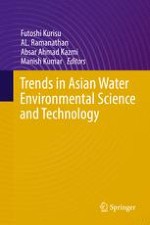2017 | OriginalPaper | Buchkapitel
Hydrological Regimes and Zooplankton Ecology at Tempe Floodplains, Indonesia: Preliminary Study Before the Operation of the Downstream Barrage
verfasst von : Reliana Lumban Toruan, Fajar Setiawan
Erschienen in: Trends in Asian Water Environmental Science and Technology
Aktivieren Sie unsere intelligente Suche, um passende Fachinhalte oder Patente zu finden.
Wählen Sie Textabschnitte aus um mit Künstlicher Intelligenz passenden Patente zu finden. powered by
Markieren Sie Textabschnitte, um KI-gestützt weitere passende Inhalte zu finden. powered by
Floodplain is one of a very productive ecosystems (Ning et al. 2013) and harbours high biodiversity of micro-invertebrate (Shiel et al. 1998). Flood and drought cycles induce high biodiversity, and thus productivity, in the floodplain systems where connectivity between terrestrial and aquatic component plays an important role (Schöll et al. 2012; Armitage et al. 2003). Floodplain ecosystem features a network of riverine, and ditches habitats (Armitage et al. 2003), where flood events form a large inundated area by which the terrestrial and aquatic ecosystems are connected. During drought phase, habitats in riverine-floodplain systems are fragmented and isolated from the main river channel forming distinct habitats with distinctive abiotic and biotic characteristics (Thomaz et al. 2007). As opposed to dry condition, floods will reconnect the fragmented habitats, allowing the connectivity between riverine and floodplain systems; and reduce spatial variability within patchy habitats which are formed during low water period. A number of studies suggest that increasing water level during floods event results in increasing similarity between habitats as the connectivity established (Thomaz et al. 2007; Tockner et al. 2000). It is clear that hydrological regime is the key driving force of ecological function and biodiversity in floodplain systems. There have been little study conducted about zooplankton from the floodplain of tropical regions, especially, Indonesia, one of the world’s biodiversity “hotspots”. This preliminary study has, therefore, summarised the diverse assemblages of zooplankton of Lake Tempe as a response to changing water level during dry and flood seasons. Planktonic organisms, including zooplankton, are the key elements in the aquatic environment (Palmer and Yan 2013). The responses of zooplankton to changing environment due to fluctuated water level are fundamental to our understanding of the dynamic of planktonic organisms in floodplain habitats, mainly where they are moderately or heavily regulated.
